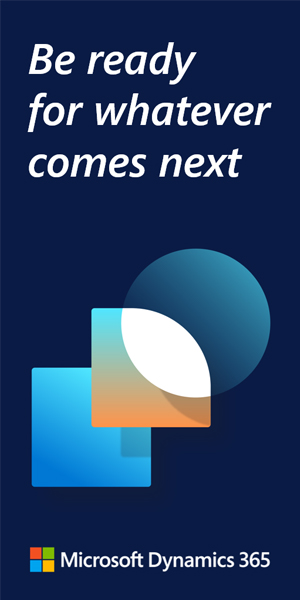In a move to accelerate its digital transformation and reinforce its leadership in the UK financial services sector, Lloyds Banking Group has announced an expanded strategic partnership with Oracle, adopting next-generation multicloud infrastructure solutions to boost innovation, speed, and customer satisfaction.
Under a multi-year agreement, Lloyds will migrate critical databases powering its banking and business services to Oracle Database@Azure, an offering that allows Oracle databases to run on Oracle Cloud Infrastructure (OCI) inside Microsoft Azure data centers. This landmark decision reflects a forward-thinking multicloud strategy, positioning Lloyds as a trailblazer among European financial institutions embracing the agility of cloud-native services.
To further support its operational resilience and performance requirements, Lloyds will also deploy Oracle Exadata Cloud@Customer to run select Oracle databases within its own data centers. This hybrid configuration—powered by Oracle’s distributed cloud—provides the same high-performance, scalable infrastructure whether used on-premises or in the public cloud, enabling seamless and consistent experiences.
“As we focus on growth and diversifying our business, maximizing our use of data across the Group becomes critical so that we can innovate and deliver new services faster for our customers,” said Joe Soule, CIO, Enabling Services at Lloyds Banking Group. “The ability to flexibly deploy Oracle databases on-premises or in the public cloud, in combination with Microsoft Azure through a multicloud approach, enables us to accelerate the pace at which we adopt digital technologies.”
The announcement marks a significant milestone in Lloyds’ technology transformation journey—one that is centered around customer experience, operational agility, and intelligent innovation. With Oracle’s cloud solutions, Lloyds gains faster access to mission-critical data, improved application performance, and the freedom to scale dynamically across multiple environments.
This agility is essential in a sector where speed to market and data integrity are crucial. By integrating OCI’s high-performance database services with the flexibility of Azure, Lloyds can reduce infrastructure complexity, maintain regulatory compliance, and build cloud-native applications that deliver greater value to customers.
“Few sectors are evolving as rapidly as the financial services industry when it comes to cloud adoption,” noted Richard Smith, EVP and GM, EMEA Cloud Infrastructure at Oracle. “Lloyds is one of the companies at the forefront of this transition. By taking advantage of the industry’s most comprehensive and flexible approach to the cloud, Lloyds can streamline its migration and enable more innovation for its customers.”
The Oracle Database@Azure offering—now available in 14 global regions, with 18 more planned in the next 12 months—brings together Oracle’s enterprise-grade database services and Azure’s cloud-native capabilities. It enables enterprises like Lloyds to migrate databases without refactoring, while building new low-latency, AI-enabled applications that bridge OCI and Azure’s ecosystems.
Oracle’s Distributed Cloud Strategy plays a key role in this collaboration. With options spanning public, dedicated, hybrid, and multicloud environments, Oracle empowers organizations to meet data residency requirements, maintain sovereignty, and ensure business continuity—all without sacrificing the advantages of cloud scalability and automation.
For Lloyds, this translates to greater resilience, security, and future-proofed infrastructure—a competitive edge in a rapidly evolving market. With this expanded alliance, Lloyds Banking Group sets a compelling example for legacy financial institutions charting a course toward cloud modernization. By seamlessly bridging on-premises systems with public cloud innovation, the bank is positioning itself for faster product development, more personalized customer experiences, and stronger digital leadership.
What this means for ERP insiders
Oracle Database@Azure promises two-fer of performance and flexibility. This multicloud option offers Oracle-grade performance (e.g., Exadata) with the ecosystem familiarity and integration of Azure, and it enables organizations to modernize infrastructure without abandoning existing Microsoft investments (e.g., Azure Active Directory, Power BI, Teams). Companies choosing this route can lift-and-shift Oracle databases directly into Azure—no need to refactor applications or re-engineer code, which speeds up migration, reduces cost, and minimizes disruption to business operations. The solution is powered by Oracle Interconnect for Azure, which provides low-latency, high-throughput connectivity between OCI and Azure, and it enables hybrid application stacks: for example, use Oracle DB on OCI with front-end apps on Azure App Services. Multinational customers can deploy Oracle databases within local Azure data centers, addressing data residency and compliance needs. Customers get Exadata performance and scalability inside Azure—ideal for mission-critical workloads with high availability and throughput needs, and full compatibility with Oracle features (e.g., RAC, Data Guard, Partitioning). And Azure customers can access Oracle Database@Azure via the Azure Marketplace, with unified billing and Microsoft support options. Best fit companies for Oracle Database@Azure are large enterprises with existing Oracle database workloads looking to modernize without re-engineering, organizations with Azure-first strategies that need Oracle database performance, companies in regulated sectors requiring data residency and high availability, and enterprises seeking to develop hybrid apps using both OCI and Azure services (e.g., AI in Azure, transactional DB in Oracle).
Look at all angles of current and future fit with Oracle Database@Azure. It’s still a relative new offering. Enterprise adoption is growing, but some customers may encounter early-stage integration friction. Also, customers should carefully evaluate Oracle licensing options (BYOL vs. subscription), especially if migrating from on-prem or non-Oracle clouds. Oracle Support Rewards and Azure Hybrid Benefit may help offset costs but require planning. Try to avoid vendor lock-in. Although this is a multicloud solution, you’re still heavily tied to Oracle’s database technology. Consider long-term architectural flexibility and exit strategies. Managing Oracle workloads inside Azure with OCI’s operational model may require additional training for DBAs and cloud architects. And if your infrastructure spans AWS, Google Cloud, or other providers, integrating Oracle@Azure into that landscape may require additional network and governance complexity.
Oracle Database@Azure could be boon to ERP modernization. ERPs require high availability (HA), fault tolerance, and performance—especially for core finance, manufacturing, and HR processes. Oracle Exadata inside Azure ensures ultra-fast IOPS and throughput. Built-in RAC (Real Application Clusters) and Data Guard provide robust HA and disaster recovery (DR). For highly regulated industries (e.g., financial services, government), data residency and compliance are major blockers to cloud ERP. These regulatory hurdles can be handled by deploying Oracle Database@Azure in regional Azure data centers, maintaining compliance with GDPR, UK/EU financial regs, or industry-specific mandates. Existing customers of Oracle E-Business Suite or JD Edwards now have an option to move to Azure without code rewrite. SAP, Infor, or other third-party ERPs running on Oracle databases, with Microsoft-centric IT ecosystems now have a path forward. The Oracle Database@Azure offering also should appeal to large enterprises with data gravity in Azure looking for tight latency and identity integration. Any ERP modernization project aiming for high performance with compliance-grade cloud deployment should have a look at this multicloud option.






